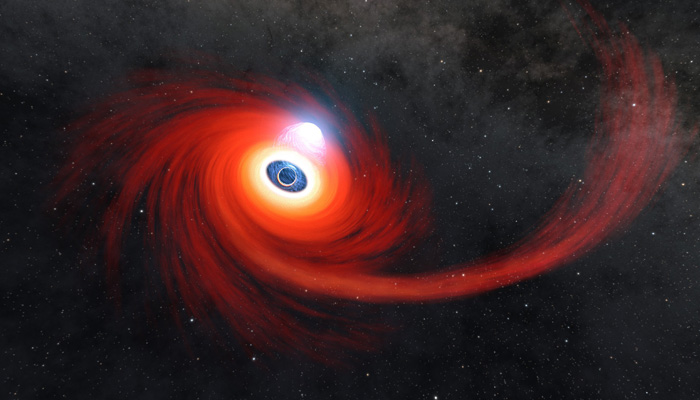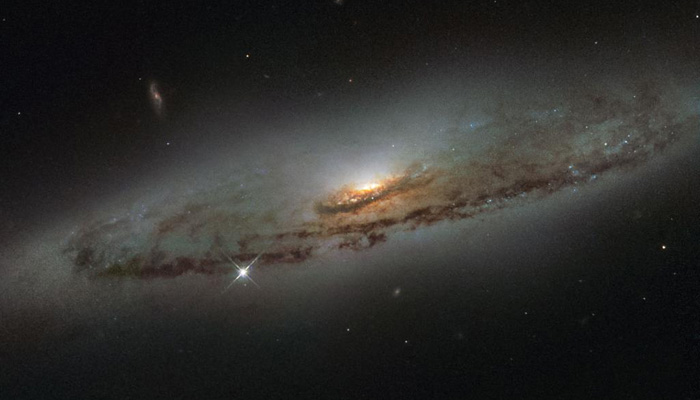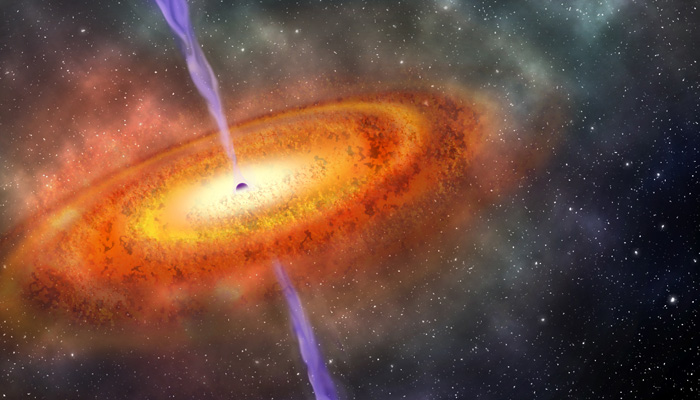Supermassive black hole wakes up with brightest ever cosmic fireworks
Black hole has place at centre of every giant galaxy, scientists are trying to reveal cause behind transients in J221951
July 07, 2023

Researchers have discovered the brightest event ever detected in deep space which occurred as a supermassive black hole "came to life" and started consuming surrounding matter.
When the brightness in astronomical objects changes over a small period of time is regarded as transient.
According to scientists, the transient caused by a J221951 is one of the brightest ever detected.
As black hole has a place at the centre of every giant galaxy, scientists are trying to reveal the cause behind the transients in J221951.
An astronomer from the University of Belfast Matt Nicholl, said in a statement: "Our understanding of the different things that supermassive black holes can do has greatly expanded in recent years, with discoveries of stars being torn apart and accreting black holes with hugely variable luminosities."
It remains unknown what the supermassive black hole — located at 10 billion light-years away — is consuming, however, it is anticipated that J221951 is a star that went too close to the giant black hole and is being violently torn by forces arising from potent gravitational pull — called spaghettification.

This disruption would cause some stellar material to fall into the black hole with its remnants spreading all across the nearby area on the accreditation disk.
It is not the only factor causing the bright transient of the J221951, but that J221951 is the result of the nucleus at the heart of a galaxy switching from a dormant to an active state, according to space.com.
The findings were presented at the National Astronomy Meeting 2023 in Cardiff, UK
Active galactic nuclei (AGNs) are bright areas at the centre of galaxies that emanate enough light to lessen the light of every star in the rest of that galaxy. They are also powered by supermassive black holes.
"Continued monitoring of J221951 to work out the total energy release might allow us to work out whether this is a tidal disruption of a star by a fast-spinning black hole or a new kind of AGN switch on," Nicholl added.

When the two neutron stars or a neutron star and a black hole merge and create brightness, it is called Kilonovas — a type of transient event. After the merger, the objects release electromagnetic radiation.
At first, they have a blue colour and then turn red after several days. The transient J221951 also showed blue colour but did not act as a kilonova.
"The key discovery was when the ultraviolet (UV) spectrum from Hubble ruled out a galactic origin. This shows how important it is to maintain a space-based UV spectrograph capability for the future," team member and Mullard Space Science Laboratory at University College London researcher Paul Kuin said.
With a source located 10 billion light-years away, the team realised that J221951 must be one of the brightest events ever seen. They will now work to better understand its cause.
"In the future, we will be able to obtain important clues that help distinguish between the tidal disruption event and active galactic nuclei scenarios," Oates said.
"For instance, if J221951 is associated with an AGN turning on, we may expect it to stop fading and to increase again in brightness, while if J221951 is a tidal disruption event, we would expect it to continue to fade.
"We will need to continue to monitor J221951 over the next few months to years to capture its late-time behaviour."









